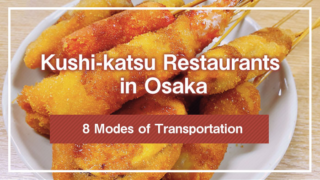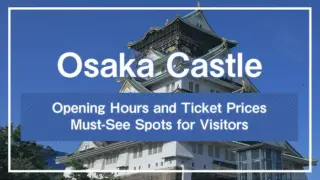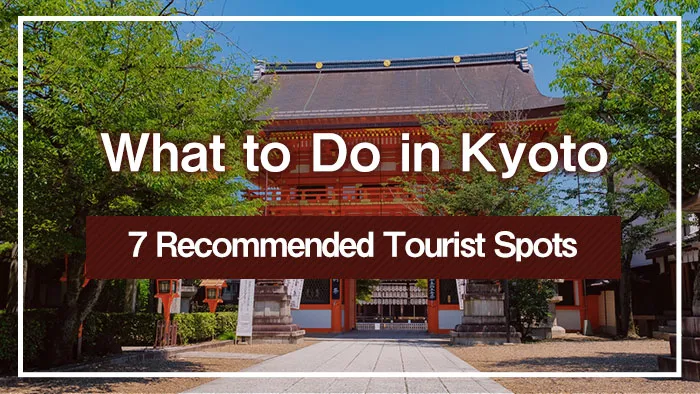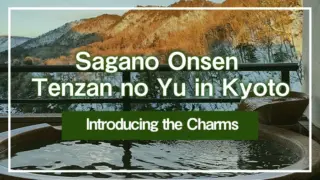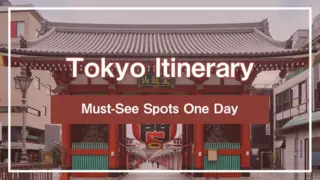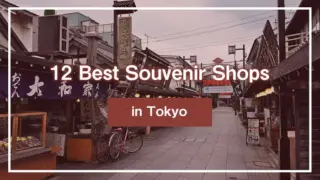Kyoto, Japan’s ancient capital, boasts a history spanning over 1,000 years. The city is home to numerous historic structures, including temples, shrines, palaces, and gardens. Traditional culture and arts, such as tea ceremonies, flower arrangements, and Kyoto cuisine, continue to thrive in Kyoto.
This article showcases seven must-see tourist attractions and activities in Kyoto. Take your time exploring the city and immerse yourself in its charm.
1.How to Get to Kyoto
There are various ways to travel to Kyoto, although the city does not have its own airport.
The nearest airports are Kansai International Airport and Osaka International Airport (Itami Airport) in Osaka Prefecture. Kansai International Airport is especially convenient for international flights. If you’re flying from Tokyo’s Narita or Haneda Airports, flights take about 1 hour, with fares starting around 8,000 yen. After arriving at Kansai International Airport, you can reach Kyoto by train or bus in approximately 80 minutes.
Traveling from Osaka to Kyoto is easiest by train. The JR Kyoto Line’s rapid service takes about 30 minutes from JR Osaka Station to Kyoto Station. For even faster travel, the Shinkansen takes about 15 minutes from Osaka to Kyoto. Other options include the Hankyu Kyoto Line and the Keihan Main Line, both offering affordable access to central Kyoto.
From Tokyo, the Shinkansen is the most common mode of travel, taking about 2.5 hours on the Tokaido Shinkansen.
2. Things to Do in Kyoto
Kyoto is renowned for its history and culture, offering a variety of experiences for visitors. Here are some highlights:
・Explore Shrines
Kyoto is home to numerous beautiful shrines that showcase Japan’s culture. Notable shrines such as Kinkaku-ji and Kiyomizu-dera are famous for their grand architecture and historical significance.
・Visit Japanese Gardens
Kyoto is the perfect place to enjoy the beauty of Japanese gardens. Gardens such as Ryoan-ji’s rock garden and Nanzen-ji’s gardens are meticulously maintained, offering a sense of tranquility and traditional Japanese aesthetics.
・Enjoy Japanese Arts
Kyoto offers plenty of opportunities to experience traditional Japanese arts. Activities include strolling in kimono, participating in tea ceremonies, and watching maiko (apprentice geisha) performances.
Ultimate Guide to Kimono Rental in Kyoto: Top Shops & Tips
Spots, Festivals, and Events to Meet Maiko in Kyoto
・Stroll Through Historic Streets
Kyoto’s streets, lined with traditional machiya houses, evoke a sense of old Japan. Areas like Gion and Ninenzaka-Sannenzaka are particularly atmospheric and offer a glimpse into Kyoto’s historic charm.
・Savor Delicious Food
Kyoto’s food culture is rich and diverse. Enjoy matcha-based sweets, dishes featuring Kyoto vegetables, and other local delicacies that highlight seasonal ingredients.
・Experience Kyoto’s Nature
Kyoto’s natural beauty changes with the seasons, from enchanting cherry blossoms in spring to vibrant autumn leaves. Explore mountains like Mt. Hiei and Mt. Atago, rivers like the picturesque Kamo and Katsura, and scenic spots like Amanohashidate, one of Japan’s three scenic views.
・Relax in Onsens and Sento
Kyoto has many traditional public baths and natural hot springs in the surrounding areas. Soak in the warm waters to rejuvenate both body and mind.
・Shop for Unique Souvenirs
Kyoto offers a variety of traditional souvenirs. One popular item is Yatsuhashi, a sweet made of thin, mochi-like dough filled with sweet bean paste. Other recommendations include Japanese-style pickles, Uji tea, and Kyoto folding fans.
・Observe Japanese Monkeys
At Arashiyama’s Monkey Park Iwatayama, you can observe Japanese monkeys up close in their natural habitat. The park also offers stunning views from the mountain top, making it a worthwhile visit.
3. Seven Popular Tourist Spots in Kyoto
As a city that represents Japan’s ancient capital, Kyoto boasts numerous cultural landmarks, including many temples, shrines, gardens, and other heritage sites, providing ample opportunities to experience Kyoto’s rich culture simply by walking around.
Here are seven iconic tourist spots in Kyoto:
3-1. Arashiyama Bamboo Grove
引用:えびす屋
The Arashiyama Bamboo Grove is a breathtaking sight with thousands of verdant bamboo stalks neatly lined up, creating a tunnel-like path that offers a mystical and serene experience. This tranquil, otherworldly space provides a perfect escape from the hustle and bustle of everyday life.
Surrounding the bamboo grove are ancient temples and historical sites, further enhancing the picturesque scenery. When visiting the Arashiyama Bamboo Grove, it’s also recommended to explore other nearby attractions like the iconic Togetsukyo Bridge and Tenryu-ji Temple.
3-2.Fushimi Inari Taisha
Fushimi Inari Taisha in Kyoto is one of Japan’s most renowned and popular tourist destinations. The shrine is famous for its thousands of vibrant red torii gates, known as the “Senbon Torii,” which create stunning pathways and are a popular spot for photography. This site attracts not only worshippers but also many visitors looking to capture beautiful images.
Fushimi Inari Taisha is also famous as a power spot. Within the shrine grounds, you’ll find numerous statues of foxes, which are considered messengers of the Inari deity. These foxes hold various items in their mouths, such as jewels, keys, scrolls, and rice stalks, adding to the enjoyment of exploring the shrine.
3-3.Kiyomizu-dera
Kiyomizu-dera, located in Higashiyama Ward, Kyoto, is a temple registered as a UNESCO World Heritage site under the “Historic Monuments of Ancient Kyoto” in 1994.
The most famous feature of Kiyomizu-dera is its wooden stage, known as the “Kiyomizu Stage,” which juts out from the main hall, offering a panoramic view of Kyoto city. The temple has long been a place of worship and houses numerous cultural treasures, including the statue of the Eleven-faced, Thousand-armed Kannon.
The area around Kiyomizu-dera is home to many other popular Kyoto attractions such as Yasaka Shrine, Gion, and the Ninenzaka and Sannenzaka streets. After visiting Kiyomizu-dera, exploring these nearby spots is a great idea.
3-4.Kinkaku-ji (Golden Pavilion)
Kinkaku-ji, located in Kita Ward, Kyoto, is a temple officially known as Rokuon-ji. It is popularly called “Kinkaku-ji” due to the gold leaf that covers its main hall, the Shariden (reliquary hall).
The Shariden is a three-story structure, with each floor designed in a different architectural style: the first floor is built in the Shinden style, the second in the Bukke style, and the third in the Chinese Zen style. The second and third floors are covered in gold leaf, giving Kinkaku-ji its name and iconic appearance. Beyond its stunning visual appeal, Kinkaku-ji holds significant historical value as an exemplar of traditional Japanese architecture and aesthetics.
3-5.Nijō Castle
Nijō Castle, located in Nakagyō Ward, Kyoto, is a National Treasure of Japan. It was built in 1603 by Tokugawa Ieyasu.
Nijō Castle features various architectural styles, including the shoin-zukuri (a style of Japanese residential architecture), the karamon (a type of gate), and the higashi-ōtemon (the main eastern gate). One of the most well-known features is the “nightingale floors,” named for the chirping sound they make when walked upon, reminiscent of a nightingale’s song.
Additionally, Nijō Castle has been the stage for various significant events in Japan’s modern history, including the Meiji Restoration and World War II.
3-6.Gion
引用:祇園商店街振興組合
Gion, located in Higashiyama Ward, Kyoto, is the city’s most famous geisha district. It has retained traditional culture since the Heian period.Gion is characterized by numerous traditional teahouses (ochaya) and geisha houses (okiya).
The charm of Gion lies in its historic atmosphere. The area features stone-paved alleys, lattice windows, and traditional machiya houses. Visitors may also encounter geisha and maiko (apprentice geisha) as they stroll through the streets, adding to the district’s allure.
3-7.Nishiki Market
Nishiki Market, located in Nakagyō Ward, Kyoto, is a bustling 390-meter-long covered market street. With a history spanning approximately 400 years, it is affectionately known as “Kyoto’s Kitchen.” Nishiki Market houses over 100 shops and stalls selling fresh seafood, vegetables, fruits, pickles, Kyoto sweets, and various local delicacies and souvenirs. It is a lively spot frequented by tourists and locals alike.
Conclusion
Kyoto is a city that seamlessly blends historical grandeur with abundant tourist attractions. Iconic landmarks including Kiyomizu-dera, Nijō Castle, Kinkaku-ji, and Arashiyama provide so much to see and explore. In areas such as Gion, Nishiki Market, and Arashiyama, visitors can enjoy strolling while sampling delicious local cuisine, combining sightseeing with a taste of Kyoto’s culinary delights.
Kyoto also boasts excellent transportation access, withKyoto Station serving Shinkansen, JR lines, and private railways. Within the city, an extensive network of subways, buses, and taxis makes it easy to visit multiple tourist spots in a single day.
*This article is based on information available as of May 2024.



